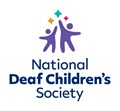Story
Thanks for taking the time to visit my JustGiving page. You're busy people so here are the key things you need to know:
1. Next January, I am going to try to reach the summit of Aconcagua.
2. Acon-what? It's a mountain in the southern Andes near the border between Argentina and Chile.
3. It's a pretty serious undertaking. Only about 1 in 3 people who attempt it make it to the summit.
4. I'm going to be raising funds for the National Deaf Children's Society. My daughter Cora is hearing-impaired and they have been a great help, so this is my way of giving something back.
5. My fundraising target is £6,962 - the height of Aconcagua in metres. Everything I raise will go to NDCS; I am paying all the costs of the trip myself.
I hope that's enough to encourage you to dig deep and donate, but if you're interested, please read on.
About Aconcagua
The name Aconcagua is thought to come from the Quechua Ackon Cahuak or Anco Cahuac, meaning "Stone Sentinel" or "White Sentinel", and it's certainly an appropriate name. It's the highest mountain in the Andes, and it towers 1500m above the nearby peaks.
It's the highest mountain in the Americas, which makes it one of the Seven Summits, and the highest in the Western and Southern hemispheres.
In fact, the only mountains higher than Aconcagua are in a comparatively tiny patch of land squeezed (literally) between India and China. In that 300,000 square kilometre area (it sounds big, but it's less than 0.6% of the Earth's surface area) are the Himalaya, Karakoram, Kunlun, Hindu Kush, Hengduan, Pamir, Tanggula, Nyain'a ranges, containing all the world's mountains of more than 7,000m.
About the challenge
Aconcagua's height and accessibility (it's close to Mendoza, the centre of Argentina's wine industry), coupled with the wide range of possible routes, make it a popular choice for mountaineers looking to prepare for tackling higher peaks. The most straightforward route is known as the "Normal Route" and doesn't require any technical climbing. That's the one I'll be taking.
Even without climbing, the Normal Route isn't an easy option. At 6,962m, the air pressure is only about 40% of what it is at sea level, and the temperature can drop to -30 celsius with windchill. Standing high above the rest of the range, the summit is battered by the wind coming off the Pacific Ocean.
Most climbers who attempt the climb, by whatever route, turn back because of altitude sickness, cold or bad weather.
About me
Most of you will know that I have previous form for silly walks in aid of charity. I've done 24-hour treks across Scotland, Yorkshire and Exmoor. I've done the 3 Peaks, albeit slightly outside the regulation 24 hours, courtesy of fog on the summit of Scafell Pike. Five years ago, I was part of a trek to Everest Base Camp in aid of VSO and reached 5,545m on Kala Patthar.
Aconcagua is a whole other level of silliness. Or seriousness, depending on how you look at it. Above base camp, it's cold enough that normal leather boots will freeze, so we'll switch into double-skinned plastic mountaineering boots. For the summit day, we will probably need crampons and ice axes. And there's no guarantee that I'll be able to acclimatise to functioning at that altitude. Lots of people don't.
About the NDCS
Our younger daughter, Cora, is hearing impaired. The auditory nerve on her left side failed to develop as far as the ear, and she's completely deaf on that side. Fortunately, her right ear appears to be normal, apart from a touch of glue ear, and she should develop and live normally once that clears up.
Right from the point of initial diagnosis, the National Deaf Children's Society has been a huge help to us and Cora. The information, support and courses that they provide have been really important in helping us to understand her condition, how it will affect her and what we need to do to help her cope with it. Their help has been doubly important given the pressure on NHS resources that means that children with mild hearing impairments, like Cora, are low on the priority list for treatment and access to specialists.
We would like to give something back for the help they've given us, which is why I am using this trip to fundraise for the NDCS.
Training
I've got most of my kit sorted (a big shout out to Pegler's of Arundel, who found me a secondhand pair of size 13 plastic boots), so now the priority is getting fit.
My first effort was a family walk around Box Hill, with the twist that going up the hill I carried Cora and her much bigger sister Elspeth as a proxy for a full pack. I have photographic proof, which I'll upload shortly for your amusement.
Most of the rest of my training will be gym-based, but now the rugby season is starting I'll have a go at carrying them to Harlequins' home games... I'll try to keep you posted on how things are going.
